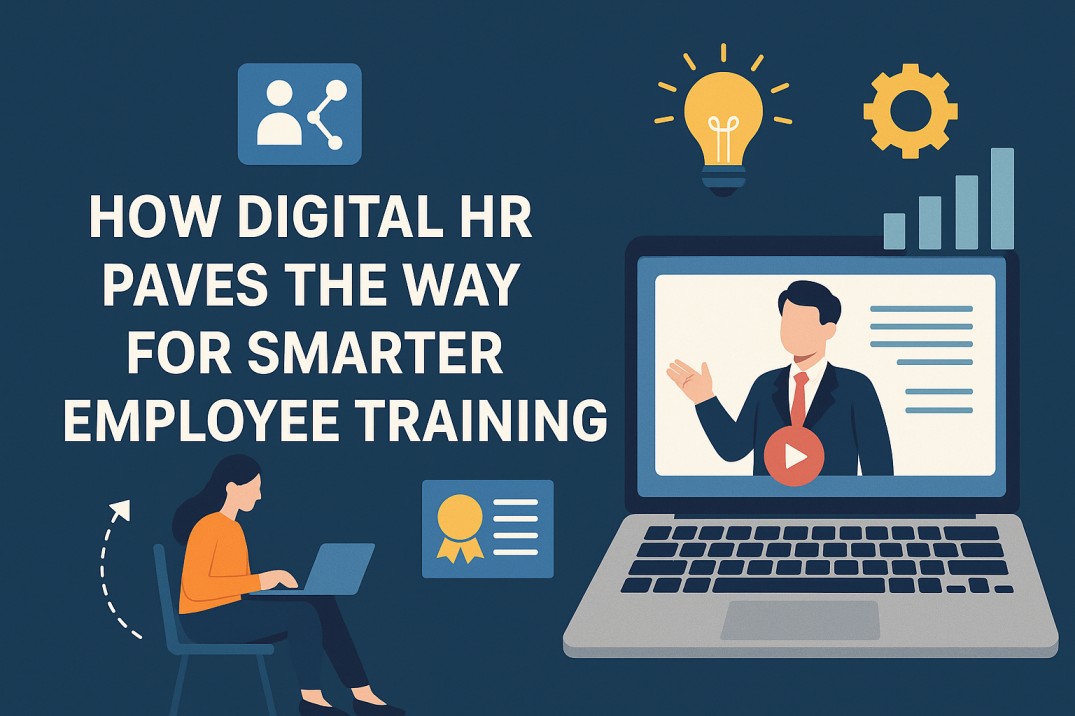A few summers back, I ran a live webinar for supervisors spread across warehouses, clinics, and office teams. Fifteen minutes in, a foreman messaged me: “Half my crew is on split shifts. Can they take the course on their phones at different times, and will it count?”
That simple question captures what most HR leads need from this topic: clear rules, workable options, and a plan that fits real schedules. This guide gives you exactly that.
Yes. California allows classroom sessions, live webinars, and self-paced e-learning, as long as the program is interactive, covers the full content, and gives participants a way to ask a qualified trainer questions.
Online delivery helps dispersed teams, shift workers, and fast-growing sites start quickly. Think of it like fitting safety gear before stepping onto the floor. When the format is easy to use, people show up ready to learn, not anxious about the tech.
What Online Training Must Include
A compliant course is more than slides with a quiz at the end. It should define unlawful harassment under state and federal law, show clear examples, explain reporting options, outline anti-retaliation rules, and teach supervisors how to respond.
It also addresses abusive conduct and harassment related to gender identity, gender expression, and sexual orientation. If you publish a topic hub, this is where you can point readers to topics covered in sexual harassment training for deeper detail.
Interactivity That Works
- Short scenario questions that mirror your job
- Knowledge checks every few minutes
- A visible path to contact a qualified trainer
- Space for employees to submit questions during the course
- Practical reminders about how to report concerns inside your company
Who Needs Training And When
If your company has five or more employees in California, you must train supervisors for at least two hours and nonsupervisory employees for at least one hour.
Everyone repeats the training every two years. New hires and newly promoted supervisors should complete training within six months.
Seasonal or temporary staff who will work fewer than six months must complete training within 30 calendar days or within 100 hours, whichever happens first. Use this section to link to your overview of requirements for sexual harassment training.
A Quick Way To Stay Current
- Tag supervisors and non-supervisors in your HRIS
- Set reminders at 21 and 23 months
- Add training to onboarding checklists
- Track seasonal and temporary roles weekly
If your readers want the plain-English policy view, consider adding a light-touch link to ‘Is harassment training mandatory in California’ near this section.
Choosing The Right Sexual Harassment In California Training Course
Look for programs that match your workforce and work settings. A hospital, a distribution center, and a software startup face different day-to-day risks.
Match examples to real life, not stock photos. Confirm run time, interactivity, trainer access, mobile compatibility, and language options.
For supervisors, build in a brief live segment focused on duty to act, documentation, and quick escalation. If you publish a buyer’s guide, place it near this section and use a short, neutral tone so it feels helpful, not salesy.
Trainer Qualifications For Online Programs
California recognizes several types of qualified trainers, including confident employment attorneys, HR professionals with relevant experience, and instructors who meet specific academic and teaching criteria.
If you license an e-learning course, name an internal point person who can handle follow-up questions and escalate complex scenarios to counsel.
Employees feel safer asking questions when they see a name and email, not just a generic inbox.
Recordkeeping And Proof
Good records save time and stress. Keep each employee’s name and role, training date, delivery method, provider details, the syllabus or slide deck, and any certificate.
Retain records for at least two years. Store files in a shared folder and mirror them in your HRIS, allowing managers to view completion status without needing to contact HR.
During audits or investigations, quick access to proof helps you respond with confidence.
Simple Tracking Tips
- One roster template for every session
- Certificate upload field on each employee profile
- A dashboard that filters by location, department, and due date
- Monthly email to managers listing anyone owing in the next 60 days
How To Make Online Training Stick
Lead with context. Open the course with a brief note from leadership emphasizing respect, clear reporting paths, and a zero-tolerance policy for retaliation. Straight talk builds trust.
Use plain language. Define terms without legal jargon. People learn faster when the words sound like those used in normal team meetings.
Practice the challenging moments. Provide supervisors with concise scripts for responding to concerns that arise. Role-play works, even on webcam.
Keep the conversation going. Add one scenario to staff meetings during the month after training. Repetition locks in habits.
Close the loop. Remind employees exactly where to report, who else they can contact if a manager is involved, and what happens next.
Common Pitfalls With Online Programs
No trainer access. Self-paced modules still need a way for participants to reach a qualified trainer. Add your internal contact on the last slide.
Missed deadlines for short-term roles. Temporary staff often slip through the cracks. Build a weekly report that flags anyone crossing the 30-day or 100-hour mark.
One-size-fits-all content. A route driver faces different situations than a lab tech. Swap in examples that match local teams.
Two-year drift. People change jobs, emails, and locations. Automate reminders and review completion rates during monthly manager huddles.
What Happens If You Skip Training
There is more at stake than a compliance box. Failing to train can appear in a dispute as evidence that the company did not take prevention seriously.
Plaintiffs’ counsel requests training records early, and gaps raise more questions. If you maintain a legal explainer, connect this section to penalties for not providing sexual harassment training so readers can see how missed training affects risk and settlements.
A 30-Day Rollout Plan You Can Reuse
Days 1 to 3: Map Your Audience
Export an active roster, tag supervisors, and flag seasonal or temporary roles that may cross the 30-day or 100-hour line.
Days 4 to 10: Pick The Format
Assign an e-learning module to all staff. Schedule a 30-minute live Q&A for supervisors focused on duty to act, documentation, and escalation.
Days 11 to 20: Communicate And Schedule
Send calendar invites with login links and deadlines. Offer two time options for the supervisor Q&A. Remind employees where to send their questions.
Days 21 to 25: Deliver And Capture Questions
Run the sessions. Collect questions that need a considered answer. Share written answers with everyone within two business days.
Days 26 to 30: Collect Proof And Tune
Export certificates, update the roster, and store materials—review completion rates by team. Adjust timing, examples, or language access for the next cycle.
Short Story From A Rollout
A distribution company launched e-learning for 300 employees and held two brief manager Q&A sessions the following week.
The questions covered locker room jokes, vendor interactions at loading docks, and team text threads. Managers are left with clear scripts and a one-page checklist.
Two months later, a supervisor used that checklist to respond the same day and looped in HR early. The issue was resolved quickly, and the team took note of the follow-through.
Final Thought
Online delivery enables compliance to be scaled without compromising the human element. Pair a solid Sexual Harassment in California training course with brief live moments that match your workplace, keep clean records, and set reminders so no one falls behind.
With the right mix, training feels less like a chore and more like a shared playbook for respect at work.
FAQs
Is sexual harassment training under California valid if employees complete it on mobile devices
Yes, as long as the course is interactive, meets the required duration, and gives access to a qualified trainer for questions. Most platforms work well on modern phones and tablets. Remind employees to finish every segment and submit any embedded quizzes.
Keep certificates or system logs as proof of your actions. A concise tip sheet with login steps helps minimize tech issues on day one.
How often is sexual harassment training in California required for supervisors and staff?
Supervisors are required to complete at least two hours of training every two years. Nonsupervisory employees are required to complete at least one hour of training every two years. New hires and newly promoted supervisors should complete training within six months.
Seasonal or temporary employees who will work fewer than six months must complete training within 30 calendar days or within 100 hours, whichever comes first.
Automated reminders help prevent missed deadlines.
Can sexual harassment training in California be a self-paced e-learning course?
Yes. Self-paced e-learning is permitted if it is truly interactive and includes a mechanism for contacting a qualified trainer who responds to questions.
Many employers pair e-learning with a short live Q&A to connect the content to internal policies and reporting paths.
This blend respects shift work and keeps supervisors aligned on how to act in real situations.
What records prove completion of sexual harassment training in California
Maintain a roster that includes names, roles, dates, delivery methods, provider details, and the course outline. Save certificates of completion when available and store them in a shared folder or your HRIS. Retain records for at least two years.
Quick access to proof speeds up audits, reduces back-and-forth with insurers, and provides managers with a clear view of who is due for refreshers.
Who qualifies to teach sexual harassment training in California for an online program?
Qualified trainers include confident employment attorneys, HR professionals with relevant experience, and instructors who meet specific academic and teaching criteria.
Your vendor should disclose trainer credentials. Even with e-learning, name an internal contact who can handle questions and escalate complex issues. Employees ask more when they see a real person behind the course.


















